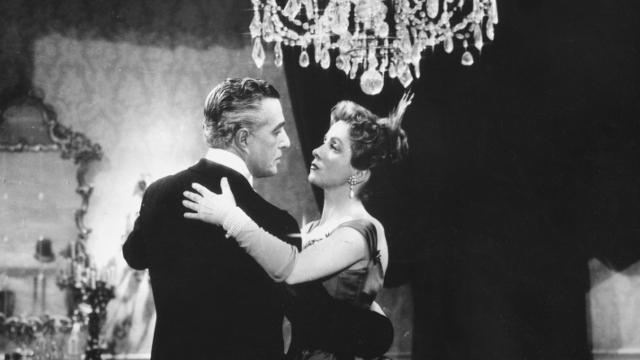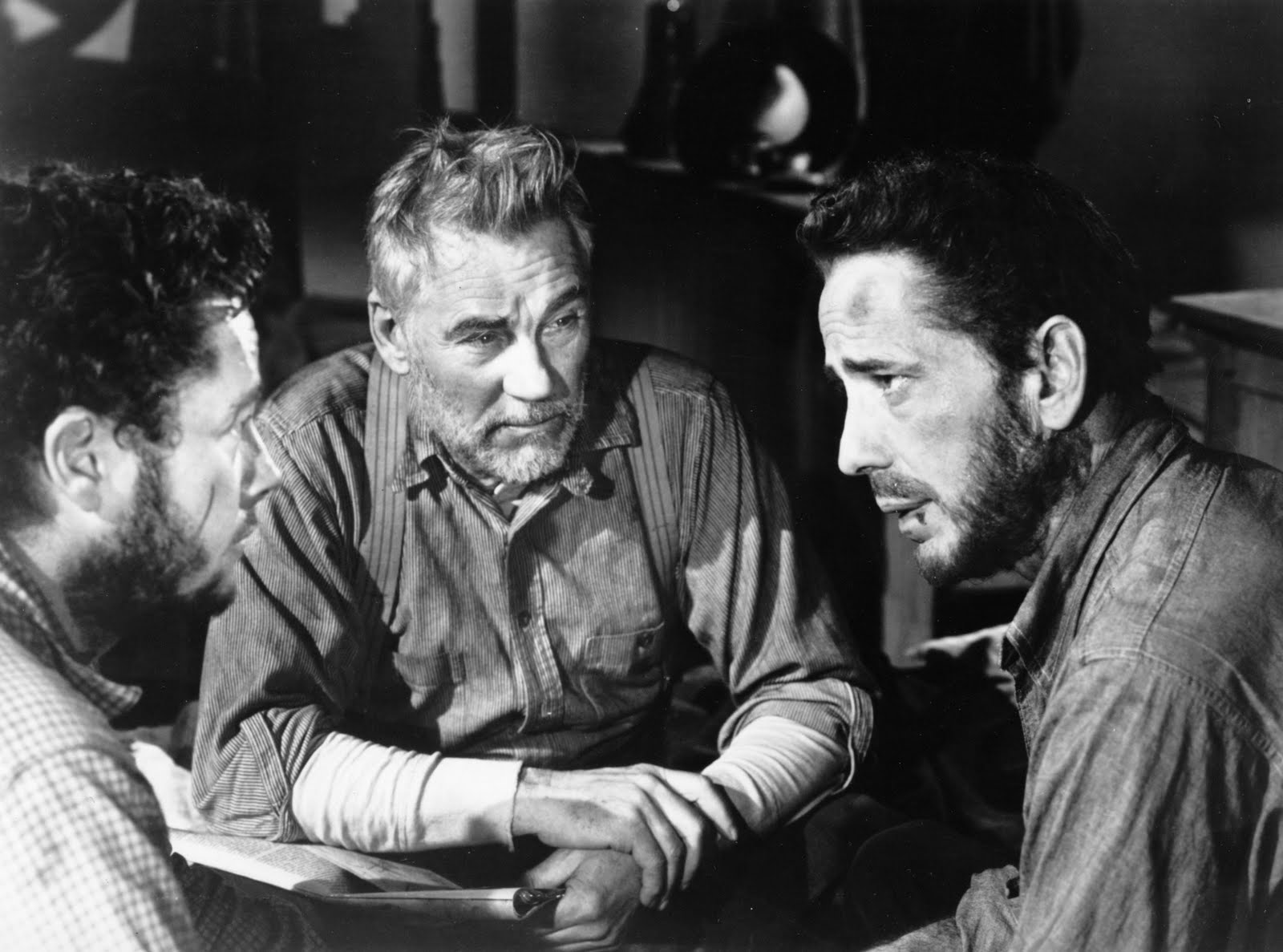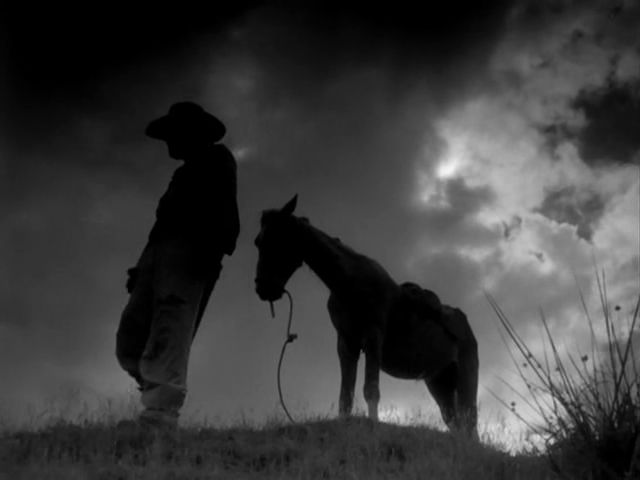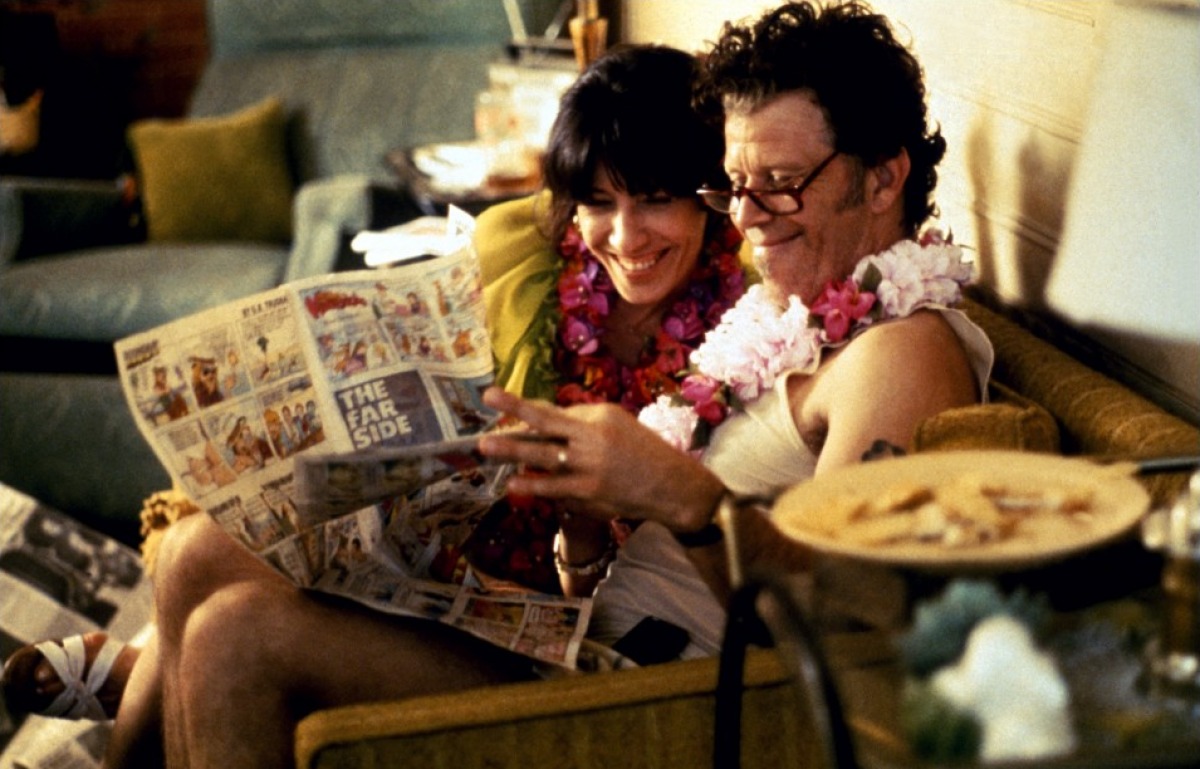5. The Earrings of Madame De… (1953)

Another influence on Phantom Thread, Max Ophüls’ The Earrings of Madame De… is one of those films that’s lightyears ahead of its time. More than twenty years before the Steadicam was even invented, Ophüls was creating camera movements that were undefeated in their meticulous precision, achieving a sort of balletic stillness that was thought to be impossible at the time. From the opening take, which lasts a magical two-and-a-half-minutes, we can see many of PTA’s elaborate tracking shots reflected in its black and white glory, not to mention the subjective camerawork that Jonathan Demme would later go on to use.
The story starts in the lavish manor house of one Général André de… (Charles Boyer), and his wealthy wife Comtesse Louise de… (Danielle Darrieux). In the opening moments, we get a taste for the material excess that takes precedence for these people, and how love is no longer a priority between them. When Madame stumbles upon a rosy-cheeked Lothario, played to perfection by none other than Italian director Vittorio De Sica, we’re whisked away into her struggle between maintaining her honor and following her heart, and the repercussions that follow.
PTA has praised this film on numerous occasions, even contributing to the Criterion release, but above the ambitious camera movements and jilted romance, it’s the overbearing heaviness of fate that’s left an everlasting impression on the filmmaker. Just take the Sydney Barringer story from the opening of Magnolia; an extended sequence that explores the unthinkable possibilities of coincidence, and the tragedy that can often be left in its wake. Anderson takes a page from Ophüls’ book by ignoring the convenience of this kind of storytelling, still managing to find a way to make the improbable feel real.
4. The Treasure of the Sierra Madre (1948)

‘Tell the story! That’s what I saw in The Treasure of the Sierra Madre. The films that I love are very straightforward stories, like really old-fashioned stuff,’ said PTA in 2007 on a press tour for There Will Be Blood. The Treasure of the Sierra Madre may be simple in its premise, but like Anderson’s career-defining oil epic, the emotional complexities of its characters are profound beyond belief. Where Daniel Day Lewis’ Daniel Plainview is fueled by the desire for oil, Humphrey Bogart’s Fred C. Dobbs is driven by his hunger for gold, making the film the ultimate blueprint for the age-old cautionary tale on greed.
Similar to David Lean, John Huston was also widely recognized for his movie milestones, from The Maltese Falcon to The African Queen, but nothing came close to the desert-set desperation of Sierra Madre. Not only does this mark what’s perhaps Humphrey Bogart’s most tormented performance, but it also sees one of the greatest family collaborations of the movies. Seasoned actor Walter Huston, otherwise known as John Huston’s dad, assumed the grizzled role of Howard the prospector, resulting in the finest ‘crazy old man’ performance the wild west ever saw. He went on to win the Oscar for Best Supporting Actor, alongside his son who bagged Best Director, making it the first ever father/son win of The Oscars.
Whichever angle you look at this from, there’s no denying that it’s a masterpiece through and through. As the arid backdrop of the Tampico desert slowly closes in around our fateful treasure hunters, we can’t help but sympathize with their selfish desires, as much as we might hate them for it. Huston’s decision to shoot on-location was unheard of at the time, marking it as one of the first American productions to do so. In hindsight, it’s these little decisions that allow the film to hold up, preserving its status as a significant turning point in cinema, and the western genre as a whole.
3. Rebecca (1940)

As far as plot goes, perhaps no film reflects the ghostly mystique of Phantom Thread as much as Rebecca. Where Phantom Thread concentrates on the void left behind by Reynolds Woodcock’s mother, Rebecca is about the vacuum of a deceased wife, and how the tremors of her existence ripple like water throughout its sprawling rooms and empty spaces. This was Alfred Hitchcock’s first foray into a high-stakes American production, and his genius is apparent from the very first frame. As with Madame de…, Hitchcock employs intricate dolly shots throughout the hazy premises of Manderley, realizing a towering manor house steeped in the trauma of the past.
Staying fairly faithful to Daphne du Maurier’s famous novel, Rebecca is a perfectly rendered adaptation of the source material, providing all the hallmarks of quintessential Hitchcock. With shattering performances from Laurence Olivier as rich widower Maxim de Winter, and a nameless Joan Fontaine as the latest incarnation of Mrs. de Winter, this is more an all-out horror movie than a weepy bourgeoisie drama. Psycho will always be remembered as Hitchcock’s enduring horror achievement, but for as much as Anthony Perkins’ Norman Bates terrifies, no villain is as mortifying as Judith Anderson’s dead-eyed housemaid Mrs. Danvers.
Anderson is just one of many established filmmakers to acknowledge Rebecca as an influential work, and it’s no surprise when accessing its attributes. Released a full year before Citizen Kane, Rebecca showcases practically all of the defining features we celebrate the supposed ‘greatest movie ever made’ for. Almost as deftly as Orson Welles ever could, Hitchcock utilized deep-focus blocking, intensely realistic model miniatures, and dynamic camerawork to create a novelistic masterpiece of brewing tension, the likes of which the cinema had never before seen. To this day, it remains the only Hitchcock outing ever to win Best Picture, affirming its place as the textbook example of how to scare through atmosphere alone, as opposed to relying solely on shock horror.
2. I Am Cuba (1964)

Of all films featured on this list, none exceed the technical wizardry of I Am Cuba. Shot by Russian camera duo Mikhail Kalatozov and Sergei Urusevsky, this is a film in which the camera is the main component, the various non-actors in the frame serving as mere pawns in the larger political game. Make no mistake, I Am Cuba is a propaganda piece overall, expressing communist-leaning views that haven’t aged well over time. However, it’s important to take these themes as a product of the time, an inevitable celebration of the end of Batista’s military dictatorship. Like Sergei Eisenstein’s revolutionary Battleship Potemkin, or even Nazi propaganda such as Leni Riefenstahl’s Triumph of the Will, the artistry transcends the disagreeable aspects of its political prejudices.
At its core, I Am Cuba is four vignettes of good people grappling with the wrath of God and grief, culminating in a raging battle of lost land and scorching sun. It’s the birth of Martin Scorsese, Francis Ford Coppola, and everyone in between, but it’s Paul Thomas Anderson who was particularly affected by the camerawork here. In Boogie Nights, Anderson lifted the one-take pool sequence from Kalatozov’s film, channeling it down to the last detail of following a woman into the pool and submerging the camera underwater. The rest of the film also mirrors Anderson’s sensibility behind the camera, crafting an increasingly omniscient, liberated shooting style.
Although the camerawork here has never been bested since, Kalatozov’s approach to ensemble storytelling is also a major high point, giving it an appeal not unlike the films of Robert Altman, another cinematic hero of Anderson’s. Still, it’s the camera that draws our gaze. Nowadays we marvel at films like 1917 for its conquering of the continuous take, not stopping to consider the CGI cheat codes and advanced editing trickery of modern technology. All I can say is, you haven’t seen anything until you’ve seen this. Throw Goodfellas and The Player out the window, I Am Cuba defines the continuous take for the ages.
1. Short Cuts (1993)

In doing a list on films favored by Paul Thomas Anderson, it seems only fitting to conclude with Robert Altman, the director who’s had the most evident influence on the matchless auteur. From Nashville and its incensing assessment of America, to the lesser-known Secret Honor and its incredible casting of actor Philip Baker Hall (Hard Eight, Boogie Nights, Magnolia) as Richard Nixon, Altman is a filmmaker whose every film has inspired Anderson in some way, helping form the inimitable DNA of his signature style. Altman’s films are basically interchangeable as to which ones influenced PTA most, but Short Cuts is the picture that best resembles his work, specifically his ensemble pieces such as Boogie Nights or Magnolia.
Connecting the dots here is a seemingly colossal task, especially when considering just how many parallels there are to Anderson’s work. Take the casting of Julianne Moore, the near-apocalyptic freak weather conditions, or Jennifer Jason Leigh’s phone-sex antics, which feel like something of a precursor to Adam Sandler’s brief experience with dirty talk in Punch Drunk Love. Of course, Altman’s ensemble masterwork has a lot more delicious offerings than its signs of influence on other work, its cast being one of them. Starring Andie MacDowell, Jack Lemmon, Julianne Moore, Matthew Modine, Jerry Dunphy, Fred Ward, Jennifer Jason Leigh, Chris Penn, Lili Taylor, Robert Downey Jr., Robert DoQui, Tim Robbins, Frances McDormand, Lily Tomlin, Tom Waits, Annie Ross and Huey Lewis, this is surely one of the greatest ensemble casts in all of cinema, giving Nashville more than a run for its performative money.
If there’s an overarching theme in both Altman’s and Anderson’s work, it’s the idea of unquestionably American characters who associate regularly with people, and yet, whether interconnected or not, they’re still gnawingly alone. Altman once said of Raymond Carver’s original novella of Short Cuts: ‘Carver’s view of the world, and probably my own, may be termed dark by some. We’re connected by similar attitudes about the arbitrary nature of luck in the scheme of things.’ This, in essence, is the epitome of Altman, and Anderson, to a certain extent. Luck’s place in the scheme of things.
Whether it’s bittersweet coincidence, the indifferent wrath of nature, or some mercurial entity housed in the clouds above, the part luck has to play in these films ranks higher than anything else, much like in real life. Sometimes it’s simply a case of being in the right place at the right time, and it’s safe to say that these two masters of the camera have never belonged anywhere but the director’s chair. If you double-billed Short Cuts and Magnolia it would run for nearly six and a half hours, but I’m willing to bet it would feel more like three. Yes, luck has always appeared on the side of these men, but it’s also genius, perseverance, and imagination that comprise the ingredients behind their abilities to tell stories, and to shake the very ground we stand on.